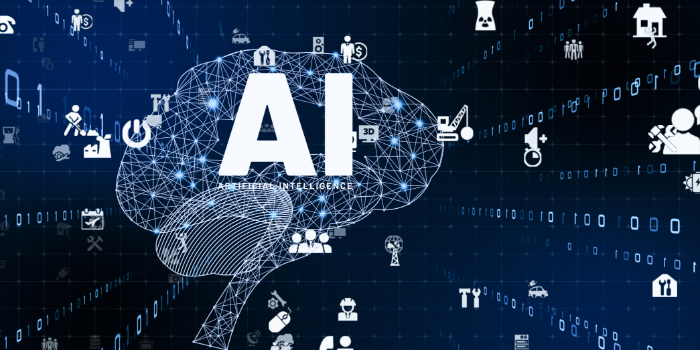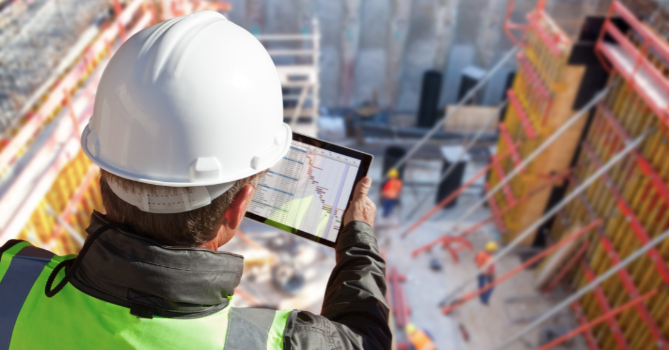
AI and BIM: A Game-Changer for Efficient Construction Projects
Unleashing the Power of AI and BIM in Construction AI and Building Information Modeling (BIM) are transforming the construction industry. BIM creates a digital version of a building, while AI helps process and analyze that data. Together, they streamline construction workflows, making projects faster and more accurate.
AI enhances BIM by automating tasks like scheduling, cost estimation, and risk management. This reduces errors and saves time, especially on large-scale projects. The result is fewer delays and better budget control.
Studies show that AI adoption in construction is growing fast. In fact, the global AI in construction market is expected to reach $3.1 billion by 2027. As AI and BIM continue to evolve, they will play an even bigger role in modernizing construction.
What is BIM and How Does AI Enhance It?
BIM, or Building Information Modeling, is a technology that creates a detailed digital version of a building. It includes everything from the structure to materials, utilities, and even schedules. This digital twin helps architects, engineers, and contractors plan, design, and manage buildings more effectively. It provides a clear picture of the project before it’s even built, reducing mistakes and improving collaboration across teams.
AI steps in to make BIM even more powerful. By using machine learning and predictive algorithms, AI can process large amounts of data that BIM generates. It can analyze project timelines, costs, and even identify potential risks early on. For example, AI can predict clashes between different building systems, like plumbing and electrical, before construction begins. This helps avoid costly errors and saves time.
AI also automates many routine tasks. Tasks like updating schedules or adjusting cost estimates based on new data are done automatically, leaving project managers more time to focus on bigger decisions. Industry surveys show that over 30% of construction firms are now using AI to improve their BIM workflows. Experts predict that this trend will only continue to grow, with AI driving more innovation in how buildings are designed and constructed. This combination of AI and BIM is the future of smart, efficient construction.
Practical Applications: AI-Driven BIM in Action
AI-driven BIM is already making a big difference in construction. Take for example, Skanska, a global construction firm. They implemented AI within their BIM process to automate clash detection. Before using AI, detecting clashes—where different building elements interfere with each other—was time-consuming. With AI, they reduced this process from days to just a few hours, preventing costly delays and rework.
Another example is China’s Broad Group, which built a 57-story skyscraper in just 19 days. They used AI in their BIM system to optimize scheduling and resource allocation. The AI predicted the most efficient sequences of tasks, helping them complete the project in record time without sacrificing quality.
AI also transforms cost estimation. In large projects, changes often happen, impacting costs. AI can instantly analyze new data and adjust the estimates, keeping the budget accurate. This has been a game-changer for firms like Turner Construction, where AI-driven BIM ensures real-time cost updates, preventing budget overruns.
One of the biggest benefits is AI’s ability to predict issues before they arise. In Australia, Lendlease uses AI-powered simulations to foresee potential structural issues. This predictive power helps catch problems early, reducing delays and unexpected expenses.
The integration of AI into BIM systems is backed by data. Studies show firms that use AI and BIM together reduce project costs by 10-15% and save up to 20% in time. As machine learning models and data analytics continue to evolve, the possibilities for AI-driven BIM will expand even further, pushing the limits of construction efficiency.

The Benefits of AI and BIM for Construction Efficiency
AI-enhanced BIM tools are transforming how construction projects are managed. By streamlining workflows, these technologies help teams work smarter and faster. With AI automating repetitive tasks like scheduling and data analysis, project managers can focus on making key decisions. This speeds up the entire process and ensures better outcomes.
One major benefit is time savings. AI-powered BIM can cut planning time by up to 30%. It predicts potential issues early, helping teams avoid delays. For example, AI’s clash detection capabilities identify conflicts between different systems before construction starts, reducing errors that would otherwise slow down the project.
Cost efficiency is another key advantage. AI tools provide real-time cost estimates, adjusting automatically as new data comes in. This helps construction managers stay within budget, avoiding costly surprises down the line. Studies show that firms using AI and BIM together can reduce project costs by 10-15%.
AI also improves collaboration. With AI-enhanced BIM, teams can access real-time data from any location, making communication between architects, engineers, and contractors smoother. This leads to faster problem-solving and fewer misunderstandings.
Construction firms that leverage AI and BIM see fewer errors, quicker project completions, and more accurate budgets. In an industry where delays and cost overruns are common, AI and BIM offer a powerful solution for achieving greater efficiency and better project outcomes.
Overcoming Challenges and Embracing AI-BIM Integration
Implementing AI within BIM systems can present challenges. One common hurdle is the high cost of new technology. Many firms worry about the initial investment needed for AI tools. There’s also resistance from teams used to traditional methods, and a skills gap when it comes to using these advanced systems.
However, these challenges are not insurmountable. One effective strategy is gradual integration. Rather than a full overhaul, companies can start by incorporating AI in specific areas, like scheduling or cost estimation, and expand as they see success. Training is also key. By upskilling current staff, firms can ensure their teams are comfortable using AI-driven BIM tools.
A great example is Suffolk Construction, which faced initial resistance when adopting AI. They started small, using AI to predict project risks. After seeing significant time savings and fewer delays, the company fully embraced AI across its projects, leading to substantial ROI.
Experts in the industry suggest that as AI becomes more accessible, the cost barrier will lower. Early adopters of AI in construction are already seeing productivity gains of up to 50%. With the right strategies, the challenges of AI-BIM integration can be overcome, leading to long-term benefits for the entire construction industry.

The Future of AI and BIM: What’s Next?
The future of AI and BIM is full of exciting possibilities. One emerging trend is AI-driven sustainability. AI can analyze energy usage and suggest ways to make buildings more eco-friendly, reducing waste and lowering costs. Real-time project analytics will also play a bigger role, allowing teams to make instant adjustments based on live data, improving efficiency even further.
Smart cities are another area where AI and BIM will shine. As urban areas grow, these technologies will help design and manage complex infrastructure, ensuring that cities run smoothly and sustainably. Experts predict that by 2030, AI will be an essential tool in shaping smart, connected cities worldwide.
Industry leaders agree: AI-BIM integration isn’t just the future, it’s the key to staying competitive. Companies that adopt these technologies today will be the ones leading construction into tomorrow. As AI continues to evolve, its partnership with BIM will only deepen, making construction faster, smarter, and greener.
Conclusion: Embracing AI and BIM for a Competitive Edge
AI and BIM together are revolutionizing construction, offering clear benefits like reduced costs, faster project timelines, and fewer errors. This powerful combination isn’t just a set of tools—it’s a strategy for long-term success. Companies that adopt AI-enhanced BIM today will gain a competitive edge, staying ahead in an increasingly digital industry. The future of construction is smarter, faster, and more efficient, thanks to the synergy between AI and BIM. Embrace this technology now to ensure your projects are successful, sustainable, and ready for what’s next.
